Inside Cockatoo Island’s eerie Dog Leg tunnel
ONE hundred years ago this tunnel was carved into the belly of a windswept island, an island that’s said to be haunted. Would you dare step inside?
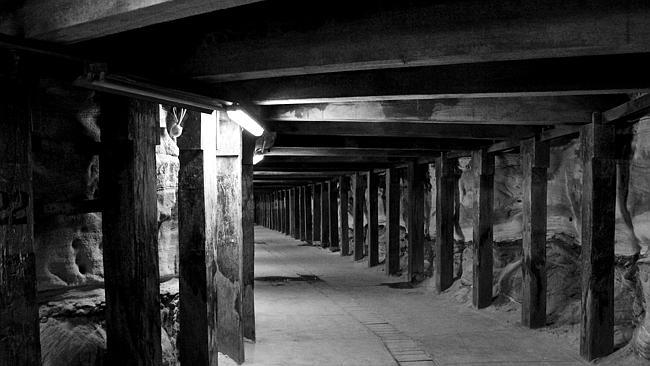
IT’S COLD and damp inside this long and narrow tunnel on a windswept island in the middle of Sydney Harbour.
At 180m long, this dark tunnel weaves its way through the belly of Cockatoo Island. Built in 1915 to move workers and materials from one side of the island to the other, when World War II broke out the tunnels were used as air-raid shelters. One of them was even kitted out with an infirmary located in an annex to the main tunnel.
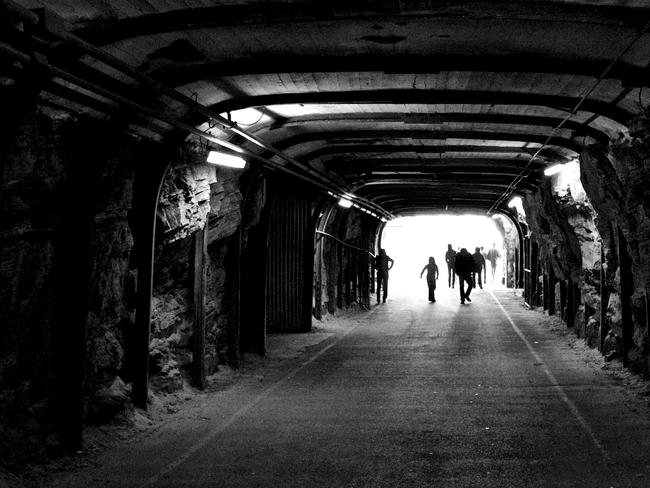
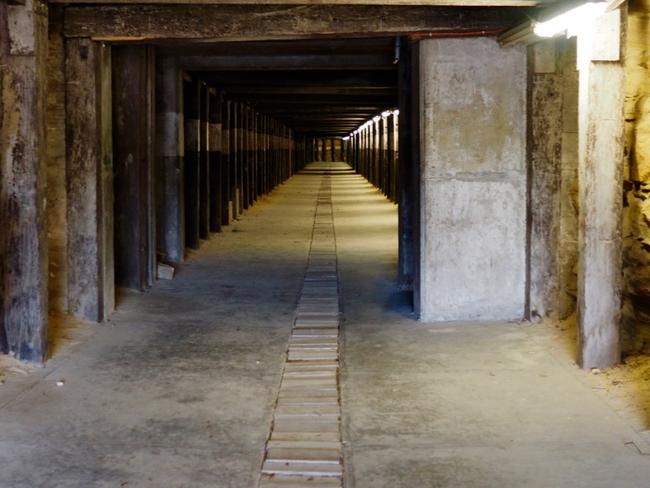
I’ve come to Cockatoo Island, the largest of the Sydney Harbour islands, to explore its rich history. Over the past 175 years the island has been a jail, a graving dock, a site for a girls’ reformatory, and a major shipbuilding site.
Since then it’s functioned as an arts venue, a top viewing spot for the New Year’s Eve fireworks and a film set (parts of Angelina Jolie’s film Unbroken were filmed here). This rocky outcrop also offers camping, “glamping” and heritage-listed houses where adventurers can stay the night.
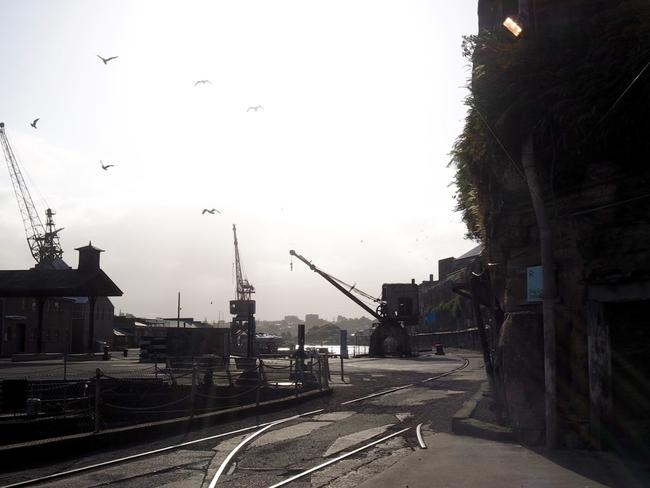
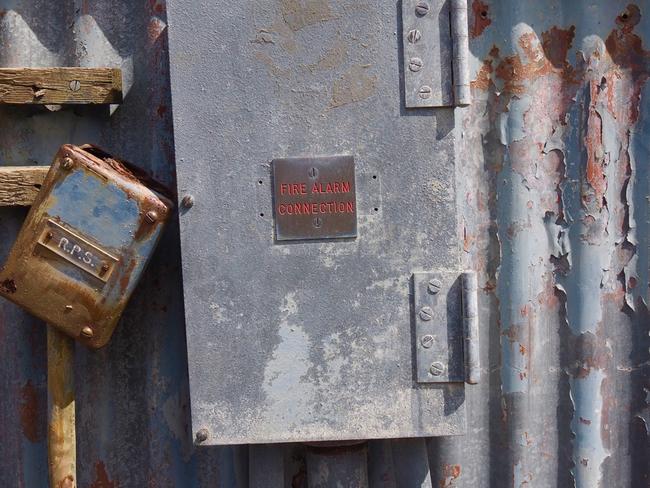
When the day-trippers and revellers have caught the last ferry back to Circular Quay, serenity reigns. As dusk falls I ramble around the sandstone prison barracks, the water towers, workshops
and houses. All these abandoned buildings sit atop the hill that’s like an acropolis of sheer-sided
sandstone, quarried to make the flat aprons for maritime industry.
On the enormous flat surfaces I wander through the complex of industrial workshops that furnish the island.
This is a place of cuttings — two magnificent docks lying nose-to-nose, rail tracks, slipways, tunnels and grain silos carved by hand into the earth.
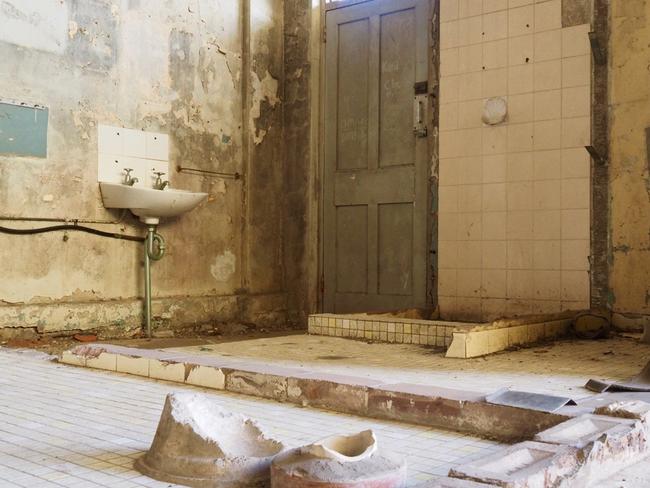
As I wander around the now silent buildings I begin to sense the ghosts of Cockatoo Island. I can feel them all around.
Sad tales abound. Convicts were left for weeks in solitary confinement cells. Souls were drowned trying to swim to freedom across Sydney Harbour. First-hand accounts from former prison guards and inmates — that you can hear via the audio tour — breathe life into the crumbling sandstone buildings.
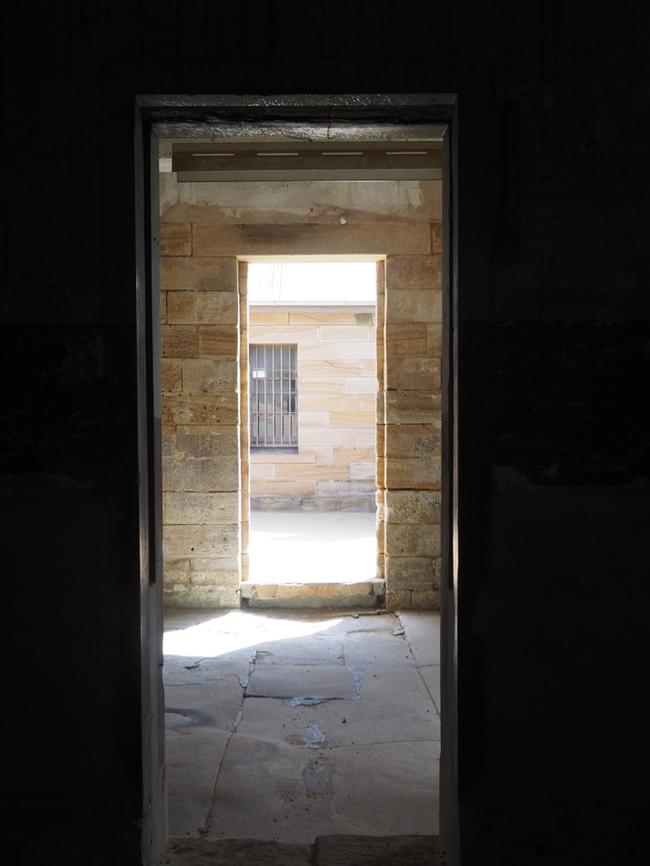
At one point there were as many as 500 men living in quarters not much bigger than a modern family house — each prisoner received a space of 45cm to sleep in. There were no facilities and the stench created by the men was so overpowering that prisoners were forced to stand gripping the bars, gulping in fresh air from outside. The prison was rife with pests including bed bugs, fleas, pestilential bacilli and rats. The wards were hot in summer, freezing in winter and flooded during the rain.
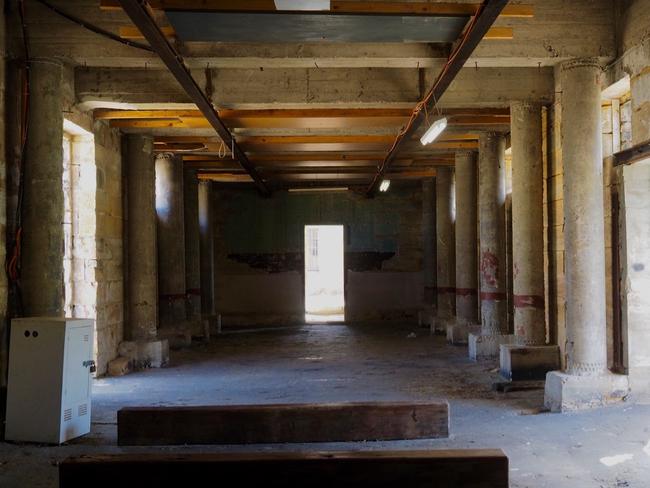
It’s only when darkness falls and we can no longer see our way that we head back to our apartment. When I wake up the next morning the day is bright, the day trippers have arrived and the ghosts have vanished.
IF YOU GO:
Cockatoo Island in Sydney Harbour is open to the public daily. It’s a 10-minute ferry ride from Circular Quay.
The island is the only harbour island where you can stay overnight — it has a unique offering of accommodation options to suit all budgets. Visitors can camp, “glamp” (in weatherproof safari-style tents on raised platforms), or stay in large heritage houses or apartments.
For more information go to cockatooisland.gov.au.
* The writer was a guest of Cockatoo Island and the Sydney Harbour Federation Trust.

